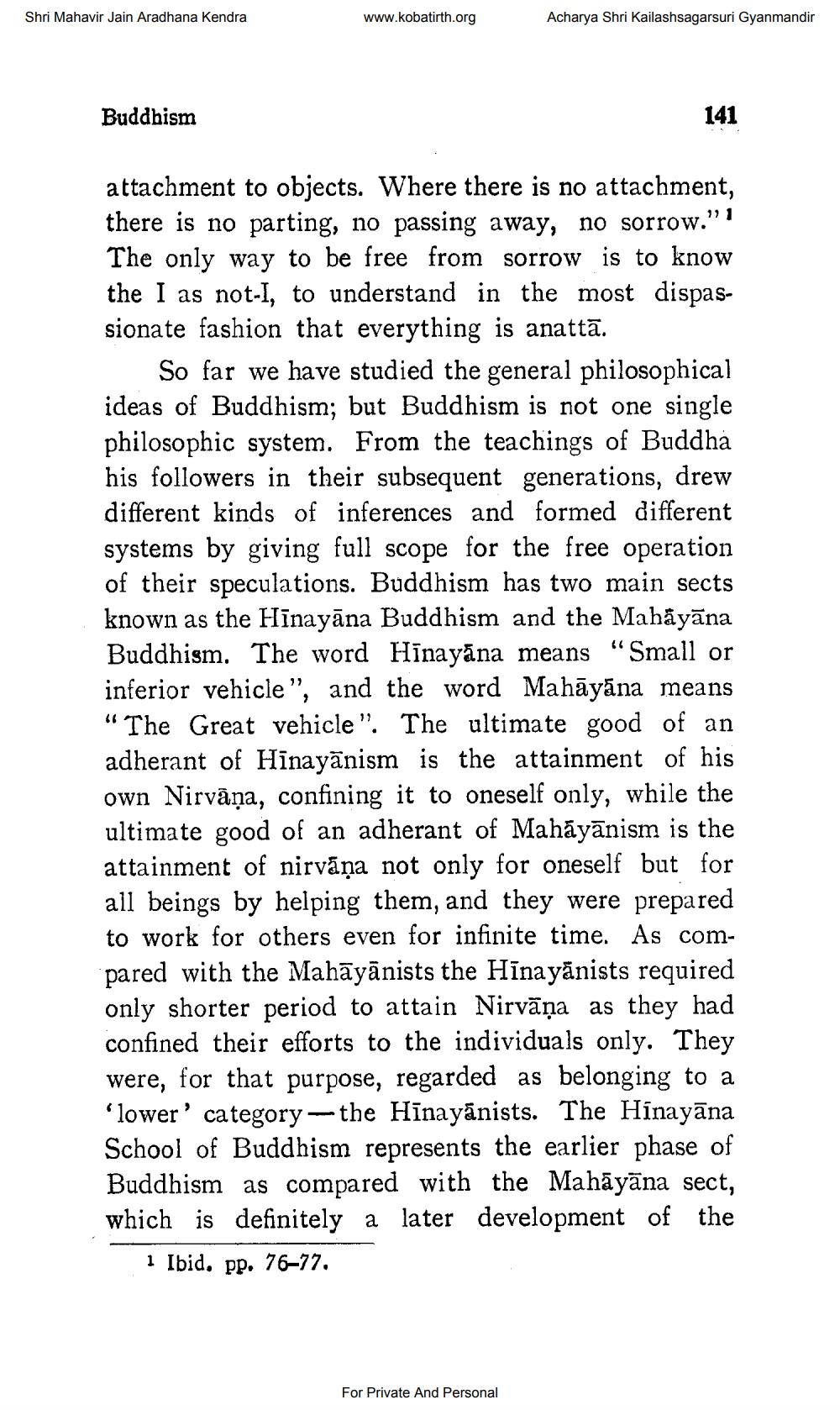________________
Shri Mahavir Jain Aradhana Kendra
www.kobatirth.org
Acharya Shri Kailashsagarsuri Gyanmandir
Buddhism
141
attachment to objects. Where there is no attachment, there is no parting, no passing away, no sorrow.”! The only way to be free from sorrow is to know the I as not-I, to understand in the most dispassionate fashion that everything is anattā.
So far we have studied the general philosophical ideas of Buddhism; but Buddhism is not one single philosophic system. From the teachings of Buddha his followers in their subsequent generations, drew different kinds of inferences and formed different systems by giving full scope for the free operation of their speculations. Buddhism has two main sects known as the Hīnayāna Buddhism and the Mahāyāna Buddhism. The word Hīnayāna means “Small or inferior vehicle", and the word Mahāyāna means “The Great vehicle". The ultimate good of an adherant of Hīnayānism is the attainment of his own Nirvāṇa, confining it to oneself only, while the ultimate good of an adherant of Mahāyānism is the attainment of nirvāņa not only for oneself but for all beings by helping them, and they were prepared to work for others even for infinite time. As compared with the Mahāyānists the Hīnayānists required only shorter period to attain Nirvāṇa as they had confined their efforts to the individuals only. They were, for that purpose, regarded as belonging to a 'lower' category - the Hīnayānists. The Hinayāna School of Buddhism represents the earlier phase of Buddhism as compared with the Mahāyāna sect, which is definitely a later development of the
1 Ibid. pp. 76–77.
For Private And Personal




